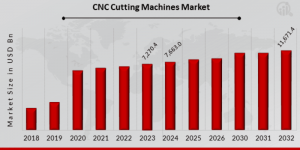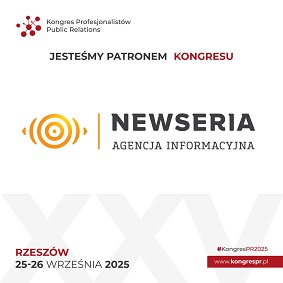CNC Cutting Machines Market to Hit USD 11,671.4 Billion by 2032 with 5.4% CAGR Growth | MultiCam, HOMAG, TRUMPF, MES
CNC Cutting Machines Market grows with rising demand for precision, automation, and efficiency in metal and material fabrication.
CNC Cutting Machines Marketa a Comprehensive Overview and Outlook
The Computer Numerical Control (CNC) cutting machines market has emerged as a cornerstone of modern manufacturing processes, driven by increasing demands for precision, automation, and efficiency in industries ranging from automotive and aerospace to construction and electronics.
CNC cutting machines utilize pre-programmed computer software to dictate the movement of cutting tools, offering unmatched accuracy and consistency. The ability to automate complex cutting tasks has made CNC machines indispensable across multiple industrial sectors. As global manufacturing practices evolve with Industry 4.0, the CNC cutting machines market is witnessing significant innovation, investment, and expansion.
Get Free Sample PDF Brochure: https://www.marketresearchfuture.com/sample_request/10810
Key Companies in the CNC Cutting Machines market include
Biesse Group
HOMAG Group
Anderson Group
MES Inc.
MultiCam Inc.
Thermwood Corporation
The Shoda Company
ShopSabre
AXYZ Automation Group
DMG MORI
KOMO Machine Inc.
TRUMPF, among others
Market Trends Highlights
Recent years have seen several key trends shaping the CNC cutting machines market. One prominent trend is the integration of Internet of Things (IoT) and Artificial Intelligence (AI) with CNC systems, enabling real-time monitoring, predictive maintenance, and enhanced operational efficiency. This convergence of technologies allows manufacturers to minimize downtime and optimize resource usage.
Additionally, there is a growing preference for hybrid CNC machines that can perform multiple functions such as milling, cutting, and drilling in a single setup. This reduces the need for multiple machines, saving floor space and investment costs.
Another notable trend is the increasing adoption of laser and plasma cutting technologies over traditional mechanical methods, driven by their superior speed, precision, and versatility, especially in complex material cutting.
Market Dynamics
The CNC cutting machines market operates in a dynamic environment shaped by technological advancement, changing consumer demands, and global economic conditions. With globalization and the rise of customized product demands, manufacturers are compelled to enhance production agility and precision, thus fueling the adoption of CNC cutting machines. The shift toward automation and smart factories also plays a critical role in reshaping market dynamics, as companies aim to reduce dependency on manual labor while maintaining consistent product quality.
Moreover, the growing emphasis on energy-efficient and eco-friendly manufacturing practices has led to the development of CNC machines that consume less power and minimize material waste. However, market players must continuously innovate to stay competitive in an industry characterized by rapid technological changes and evolving user expectations.
Buy Now Premium Research Report: https://www.marketresearchfuture.com/checkout?currency=one_user-USD&report_id=10810
Market Drivers
Several factors are propelling the growth of the CNC cutting machines market. First and foremost is the rising demand for high-precision machining in industries such as aerospace, automotive, and electronics. These sectors require components with tight tolerances and intricate geometries that are challenging to achieve with traditional methods.
CNC machines offer the required precision and repeatability, making them a preferred choice. Secondly, the increasing trend toward industrial automation is a significant driver, with manufacturers seeking to enhance productivity and reduce labor costs.
Furthermore, the rise of small and medium enterprises (SMEs), particularly in emerging economies, has led to greater demand for compact and affordable CNC solutions. The availability of government support and subsidies for adopting advanced manufacturing technologies also contributes positively to market growth.
Market Restraints
Despite its robust growth prospects, the CNC cutting machines market faces certain restraints that could hamper its momentum. One of the primary challenges is the high initial cost associated with CNC machines, which can be a deterrent for small-scale manufacturers. In addition to equipment costs, expenses related to installation, training, and maintenance can further elevate the total investment.
Another concern is the need for skilled operators and programmers who can effectively run CNC machines and troubleshoot issues. A lack of such talent, especially in developing regions, can hinder the effective adoption of CNC technology. Moreover, concerns related to cybersecurity and data privacy arise with the increasing use of connected CNC machines, making them vulnerable to hacking and data breaches if not adequately secured.
Market Segmentation Description
The CNC cutting machines market can be segmented based on type, end-user industry, and region. By type, the market is categorized into laser cutting machines, plasma cutting machines, waterjet cutting machines, flame cutting machines, and others. Laser cutting machines hold a significant market share due to their ability to deliver high precision and clean cuts, especially for thin and delicate materials. Plasma and flame cutting machines are commonly used for cutting thicker metal sheets in heavy industries, while waterjet cutting is preferred for heat-sensitive materials.
By end-user industry, the market is segmented into automotive, aerospace and defense, construction, electronics, shipbuilding, and others. The automotive sector is a major consumer of CNC Router, CNC cutting machines, utilizing them for parts manufacturing, prototyping, and design modifications. The aerospace industry also relies heavily on CNC machines for producing complex components with high safety standards. In the construction sector, CNC cutting machines are increasingly being used for architectural metalwork and structural components.
Geographically, the market is divided into North America, Europe, Asia-Pacific (APAC), Latin America, and the Middle East & Africa. Asia-Pacific dominates the global CNC cutting machines market, driven by the presence of large manufacturing hubs in China, India, Japan, and South Korea. North America and Europe follow, backed by strong automotive and aerospace industries and ongoing technological advancements.
Browse In-depth Market Research Report: https://www.marketresearchfuture.com/reports/cnc-cutting-machines-market-10810
Future Trends
Looking ahead, the future of the CNC cutting machines market appears highly promising, with several trends poised to shape its trajectory. One such trend is the rise of 5-axis and multi-axis CNC machines that offer greater flexibility and can perform complex operations in a single setup. This evolution not only enhances precision but also reduces setup time and material wastage.
The continued integration of AI and machine learning will enable self-correcting systems, wherein machines can adapt to variations in material properties or environmental conditions in real time. Additionally, the use of cloud computing and digital twins in CNC operations is expected to gain momentum, providing manufacturers with deeper insights into performance metrics and potential improvements.
Sustainability is also emerging as a core focus area, with manufacturers developing energy-efficient CNC cutting machines that align with green manufacturing goals. The increasing demand for lightweight and high-strength materials such as carbon fiber and composites will further fuel the need for advanced cutting solutions capable of handling such materials with precision. Furthermore, the democratization of CNC technology, facilitated by affordable desktop CNC machines and user-friendly software, is likely to spur adoption among hobbyists, startups, and small businesses.
the CNC cutting machines market is on a steady growth path, underpinned by technological advancements, rising automation trends, and expanding industrial applications. While challenges such as high costs and skill shortages persist, ongoing innovations and supportive government initiatives are expected to mitigate these issues over time. With evolving customer demands and a continued push toward smarter, more sustainable manufacturing, the CNC cutting machines market is well-positioned to thrive in the years to come.
More Related Reports:
Polyfluoroalkyl Substances Pfas Waste Management Market: https://www.marketresearchfuture.com/reports/polyfluoroalkyl-substances-waste-management-market-23479
Portable Industrial Data Collectors And Analyzers Market: https://www.marketresearchfuture.com/reports/portable-industrial-data-collectors-analyzers-market-23480
Industrial Valves Actuators Market: https://www.marketresearchfuture.com/reports/industrial-valves-actuators-market-23568
Profilometer Market: https://www.marketresearchfuture.com/reports/profilometer-market-23510
Punching Machine Market: https://www.marketresearchfuture.com/reports/punching-machine-market-23528
Rail Mounted Gantry Crane Market: https://www.marketresearchfuture.com/reports/rail-mounted-gantry-crane-market-23544
Reciprocating Pumps Market: https://www.marketresearchfuture.com/reports/reciprocating-pumps-market-23560
leagend BMS100 Sets New Standard for Real-Time Battery Monitoring in High-Demand Environments
AI CERTs® Launches AI+ Security Level 3™ to Equip Cyber Pros for Intelligent Threat Defense
Giant Leap Day July 20
Kalendarium
Więcej ważnych informacji
 Jedynka Newserii
Jedynka Newserii

 Jedynka Newserii
Jedynka Newserii

Prawo

KE proponuje nowy Fundusz Konkurencyjności. Ma pobudzić inwestycje w strategiczne dla Europy technologie
W środę 16 lipca Komisja Europejska przedstawiła projekt budżetu na lata 2028–2034. Jedna z propozycji zakłada utworzenie Europejskiego Funduszu Konkurencyjności o wartości ponad 400 mld euro, który ma pobudzić inwestycje w technologie strategiczne dla jednolitego rynku. Wśród wspieranych obszarów znalazła się obronność i przestrzeń kosmiczna. Na ten cel ma trafić ponad 130 mld euro, pięciokrotnie więcej niż do tej pory.
Firma
Były prezes PGE: OZE potrzebuje wsparcia magazynów energii. To temat traktowany po macoszemu

Choć udział odnawialnych źródeł energii w miksie energetycznym Polski jest stosunkowo wysoki i rośnie, to ten przyrost jest chaotyczny i nierównomiernie rozłożony miedzy technologiami – wskazuje Forum Energii. Dodatkowo OZE potrzebują wsparcia magazynów energii, a zdaniem Wojciecha Dąbrowskiego, prezesa Fundacji SET, ten temat jest traktowany po macoszemu. Brak magazynów powoduje, że produkcja energii z OZE jest tymczasowo wyłączana, co oznacza marnowanie potencjału tych źródeł.
Infrastruktura
Wzrost wynagrodzeń ekip budowlanych najmocniej wpływa na koszty budowy domu. Zainteresowanie inwestorów mimo to nieznacznie wzrasta

Budowa metra kwadratowego domu w Polsce kosztuje od 5,55 do 6 tys. zł w zależności od województwa – wynika z najnowszych analiz firmy Sekocenbud. Najdrożej jest w Warszawie, gdzie cena za metr kwadratowy domu przekroczyła już 6,2 tys. zł. Na przyrosty kosztów budowy domu wpływają zarówno drożejące materiały budowlane, jak i wyższe wynagrodzenia pracowników. Inwestorzy nie rezygnują jednak z budowy domów jednorodzinnych, co ma związek m.in. z wciąż wysokimi cenami mieszkań czy też obniżką stóp procentowych.
Partner serwisu
Szkolenia

Akademia Newserii
Akademia Newserii to projekt, w ramach którego najlepsi polscy dziennikarze biznesowi, giełdowi oraz lifestylowi, a także szkoleniowcy z wieloletnim doświadczeniem dzielą się swoją wiedzą nt. pracy z mediami.









.gif)

 |
| |
| |
|